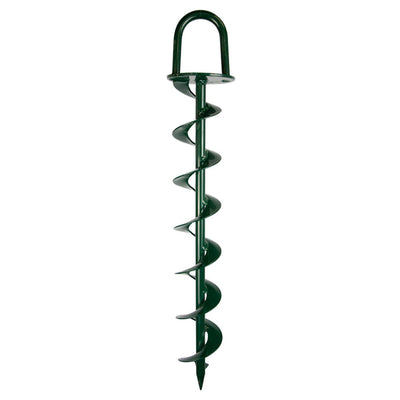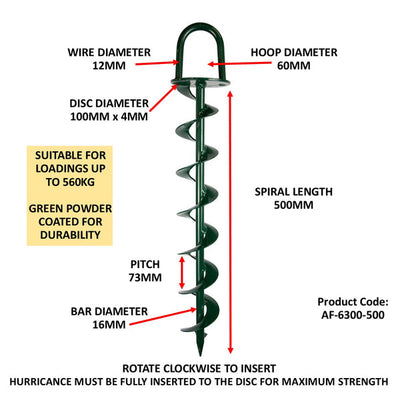Frequent Errors When Using a Ground Anchor for Security
Frequent Errors When Using a Ground Anchor for Security
Blog Article
Discover the Necessary Uses Ground Anchor in Construction and Landscape Design
Ground anchors are integral parts in both building and landscaping, offering essential security and assistance throughout various applications. From safeguarding entrances and fencings to supporting short-term frameworks and boosting the honesty of preserving walls, their flexibility is noteworthy. Their role in securing hefty devices and improving soil retention underscores their value in promoting security and sustainability. Yet, the complete range of their applications and advantages exposes intricacies that warrant more expedition, especially in just how they can transform project outcomes in both residential and business setups.
Protecting Fences and Gates
Safeguarding entrances and fencings is an essential aspect of residential property delineation and safety in both household and commercial atmospheres. Ground supports play an essential role in guaranteeing that these frameworks stay steady and effective gradually. By offering a durable anchoring remedy, ground supports aid stop fencings from leaning or collapsing as a result of ecological elements such as wind, dirt erosion, or ground activity.
In domestic setups, correctly anchored fences not just boost the visual allure of a property yet also supply safety and security and safety and security for households and family pets. In commercial atmospheres, safe fence is essential for securing assets, marking residential or commercial property limits, and making sure the safety of consumers and staff members. Ground supports can be set up in numerous dirt kinds and conditions, making them functional for various tasks.
In addition, using ground supports enables a more irreversible service compared to traditional techniques, such as concrete grounds, which can be labor-intensive and lengthy. Ground Anchor. This effectiveness is specifically useful in landscape design jobs where timelines are critical. On the whole, the assimilation of ground anchors right into fencing and gate installations significantly adds to their durability, capability, and general efficiency in safeguarding homes
Supporting Short-lived Structures
While short-lived frameworks are often designed for temporary use, their security is important for ensuring safety and security and capability throughout their operational duration. Ground anchors function as an efficient remedy for supporting these structures, which may consist of outdoors tents, phases, or modular buildings. By securing these installments securely to the ground, ground supports assist resist wind uplift and side forces that might endanger the honesty of the framework.

Furthermore, making use of ground supports allows for easy elimination and repositioning of temporary structures, making them a perfect selection for construction sites or occasions that call for versatility. Generally, ground supports are a vital device in the reliable and risk-free management of temporary structures, guaranteeing they carry out dependably throughout their meant usage.
Supporting Maintaining Walls
Using ground supports significantly enhances the structural integrity of preserving walls, which are important for managing dirt disintegration and keeping landscape security. Preserving walls go through side earth stress, and without appropriate support, they can fall short, leading to costly repairs and prospective damage to surrounding structures. Ground anchors provide a reliable remedy by moving the load from the wall right into the underlying soil or rock, ensuring the wall surface continues to be upright and safe and secure.
These supports are generally installed at a fixed angle and depth, permitting them to withstand the forces put in by the preserved dirt. By utilizing high-tensile strength products and proper installment techniques, ground supports can significantly enhance the wall surface's performance under different environmental conditions, consisting of hefty rains and seismic activity.
In enhancement, making use of ground supports can minimize the need for considerable excavation and product usage, advertising even more lasting building and construction practices. This technique not just boosts the toughness of keeping walls but also reduces the overall footprint of landscape design tasks. Incorporating ground anchors in keeping wall style is an important practice for both building and construction experts and landscape architects intending to make sure lasting security and safety.
Anchoring Heavy Devices

Ground anchors offer a trusted method to protect devices, distributing forces equally and strengthening stability. Making use of anchors enables drivers to work confidently, click here to read particularly when raising or relocating hefty lots. Additionally, in situations where machinery need to be placed on unsteady or soft soil, ground supports can be mounted to enhance hold and protect against tools from becoming or sinking paralyzed.
Executing a systematic technique to securing heavy tools not just boosts operational efficiency but likewise promotes safety criteria on website. Routine examinations and maintenance of securing systems are important to ensure their continued efficiency. By focusing on the anchoring of heavy equipment, building and construction and landscaping specialists can produce more secure workplace, inevitably causing more effective project outcomes.
Enhancing Dirt Retention

Dirt erosion poses a considerable challenge in both building and landscaping jobs, making effective dirt retention methods crucial. Ground anchors play a critical duty in enhancing soil retention by giving stability to frameworks and plant life, thus avoiding dirt displacement caused by water drainage and wind.
The installment of ground supports entails installing steel rods or cables deep into the dirt, which are after that secured to keeping wall surfaces, terracing systems, or greenery. This anchoring system not just supports the dirt but additionally boosts the general integrity of landscape design attributes. In sloped locations, ground anchors can be made use of to support keeping wall surfaces, properly decreasing the risk of landslides and soil erosion.
In addition, these anchors help in the facility of deep-rooted plants, which further fortify the soil structure. By urging root growth, ground supports add to a robust ecological community that normally holds dirt in position, decreasing the need for artificial barriers or frequent upkeep.
Verdict
In final thought, ground supports offer several critical functions in building and try this website landscaping. By assisting in these essential tasks, ground supports add substantially to the overall stability of numerous projects, guaranteeing longevity and sustainability in both business and household setups.
By providing a robust anchoring remedy, ground supports assist stop fencings from leaning or falling down due to ecological factors such as wind, dirt erosion, or ground activity. - Ground Anchor
By securing these installations firmly to the ground, ground anchors aid resist wind uplift and side find out here now forces that can compromise the integrity of the framework.
Utilizing ground anchors substantially improves the architectural stability of retaining wall surfaces, which are vital for managing soil erosion and maintaining landscape stability. Ground anchors supply a trustworthy option by transferring the lots from the wall right into the underlying dirt or rock, making sure the wall surface stays secure and upright.

Report this page